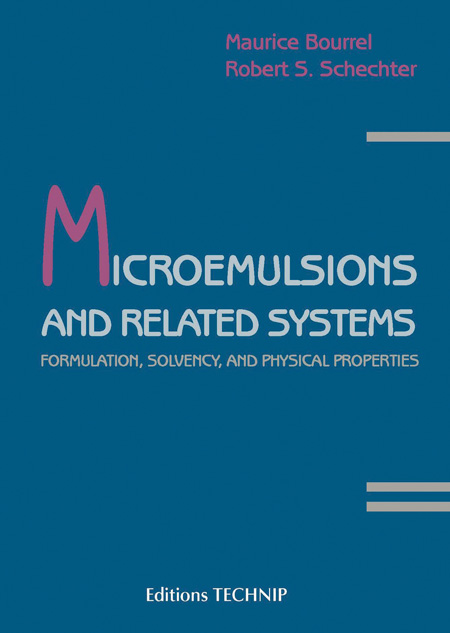Microemulsions and Related Systems
Formulation, Solvency, and Physical Properties
Authors : BOURREL Maurice , SCHECHTER Robert S.
ISBN : 9782710809562
trade paperback 170 x 240 mm 420 pages
Publication date : September 2010
American buyers

 Add to cart 224 $ (220 €)
Add to cart 224 $ (220 €)
Beginning with P.A. Winsor’s fundamental hypothesis on a natural interfacial curvature depending on the values of the formulation variables, this unique book shows scientists how to understand the intrinsic structure of these complex systems and their corresponding physical properties... predict how a change in one formulation variable (surfactant structure, oil structure, aqueous phase composition, temperature, etc.) will modify the microemulsion... and systematically formulate microemulsions for individual applications.
This book provides a thermodynamic analysis supporting the existence of natural interfacial curvature... compares the behavior of commercial surfactant mixtures and pure isomeric surfactant molecules in order to point out differences and similarities highly significant for various uses... explains how micelles can evolve smoothly and continuously toward solutions containing large quantities of oil and water... gives procedures for fixing quantitative relationships among formulation variables... plus much more.
Illustrated with more than 200 diagrams, tables, and photographs, and completely referenced, this superb volume is essential reading for surfactant, colloid, and physical chemists in both academe and industry, as well as chemical engineers, biotechnologists, and petroleum engineers.
Contents :
1. The R-Ratio. 2. Aqueous solutions containing amphiphiles. 3. Nonpolar solutions containing amphiphiles. 4. The phase behavior and properties of solutions containing amphiphiles, organic liquids, and water: micellar solutions. 5. Methods for promoting phase changes. 6. Compensating changes between formulation variables. 7. Solubilization. 8. Thermodynamics of solubilized systems.
 0
0

 Newsletter registration
Newsletter registration


 Partager
Partager
 Tweeter
Tweeter
